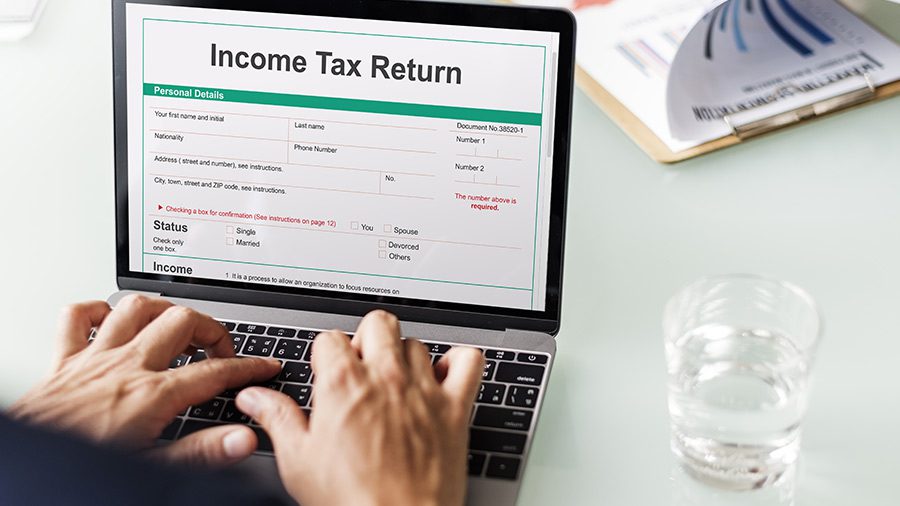Startups and Limited Liability Partnerships (LLPs) have become the driving force of India’s new economy. With this rise comes a unique set of tax obligations, compliance rules, and opportunities for deductions. As we move into FY 2024–25, founders need to stay ahead not just with innovation but also with regulatory awareness. Thanks to evolving tax laws and increasing digitalization of compliance systems, technology can now be a powerful enabler in simplifying income tax filing for startups and LLPs. Let’s explore how.
Understanding the Basics: What Makes Startups and LLPs Unique?
Startups in India, especially those registered with DPIIT (Department for Promotion of Industry and Internal Trade), enjoy certain tax benefits under the Income Tax Act. LLPs, on the other hand, are hybrid entities offering limited liability like companies and operational flexibility like partnerships.
Both are governed by specific provisions under the Income Tax Act, and their compliance structure is closely monitored by both the Income Tax Department and MCA (Ministry of Corporate Affairs).
Key Deductions Available for Startups in FY 2024–25
- Section 80-IAC: 100% Tax Exemption
- DPIIT-recognized startups can claim 100% tax exemption on profits for any 3 consecutive years out of their first 10 years.
- Conditions include:
- Turnover must not exceed ₹100 crore in any year.
- The startup must be engaged in innovation, improvement of existing products or services, or scalable business models with high employment potential.
- Depreciation on Assets (Section 32)
- Startups investing heavily in technology, equipment, and infrastructure can claim depreciation at prescribed rates.
- Tech-heavy startups may also benefit from accelerated depreciation on electronics, software, and R&D setups.
- Preliminary Expenses (Section 35D)
- Legal charges, feasibility studies, and consultant fees during company setup are eligible for amortized deductions.
- Legal charges, feasibility studies, and consultant fees during company setup are eligible for amortized deductions.
- Section 35 – R&D Deduction
- Eligible startups involved in scientific research can claim weighted deductions (up to 150%) on research expenditures if approved by prescribed authorities.
Taxation of LLPs in FY 2024–25
LLPs are taxed as partnership firms. Here’s a snapshot of their structure:
- Flat tax rate of 30% on net profit
- No dividend distribution tax (unlike companies)
- Additional 12% surcharge if income exceeds ₹1 crore
- Health and education cess at 4%
Deductions available include:
- Partner remuneration and interest (as per LLP agreement and subject to Section 40(b) limits)
- Depreciation and business expenses under normal provisions
Compliance Requirements for Startups and LLPs
1. ITR Forms and Due Dates
- Startups and LLPs not under audit: ITR-5 due by 31st July 2025
- If accounts are subject to audit: ITR-5 due by 31st October 2025
- If international or specified domestic transactions exist: 30th November 2025
2. Form 3CA/3CB and 3CD (Tax Audit Report)
Startups and LLPs whose turnover exceeds ₹1 crore (or ₹10 crore for digital transactions) must get their books audited and submit audit reports in Form 3CA/3CB and Form 3CD.
3. MAT Not Applicable, But AMT Might Be
- While Minimum Alternate Tax (MAT) doesn’t apply to LLPs or eligible startups, Alternate Minimum Tax (AMT) under Section 115JC may apply to LLPs claiming certain deductions like 80-IAC or 35AD.
Common Audit Triggers for Startups and LLPs
Startups and LLPs may be selected for scrutiny or audit if:
- There are huge expenses claimed under “miscellaneous” or “consultancy” without proper backup.
- Unusual capital gains, equity infusions, or share premium received at high valuation.
- Mismatch between ITR and Form 26AS/TIS/AIS (especially for TDS and GST reporting).
- Frequent loss declarations despite high revenue (especially in VC-funded companies).
- Sudden spikes in remuneration to partners or founders.
Using tax tech solutions can reduce audit risk significantly by ensuring proper categorization and documentation of every entry.
Tech Factor: How Startups Can Use Automation to Stay Compliant
In 2025, technology isn’t just a support tool — it’s a compliance necessity.
Here’s how startups can use tech to simplify income tax filing and compliance:
1. Cloud-Based Accounting Tools
Platforms like Zoho Books, TallyPrime, or QuickBooks allow:
- Real-time ledger updates
- Auto-classification of expenses
- Direct GST, TDS and ITR integration
2. Digital Expense Management
Apps like RazorpayX, Khatabook, and Clear allow seamless syncing of receipts, invoices, and categorize them under appropriate heads — a major time-saver during tax audit season.
3. E-Invoicing and GST Sync
For eligible businesses, e-invoicing auto-populates GST returns, reducing the chances of data mismatch with ITRs — a common audit trigger.
4. TaxBuddy and Similar Platforms
Solutions like TaxBuddy, ClearTax, and IndiaFilings now offer AI-powered dashboards to:
- Track deductions
- Alert on filing deadlines
- Compare New vs Old Tax Regime
- Suggest partner salary caps for LLPs
5. Digital Signatures and e-Verification
Most statutory filings for LLPs and startups (Form 11, Form 8, ITR, GST) can be e-signed using DSCs. Platforms like eMudhra and Digio simplify this process with cloud storage.
Final Tips for Founders and LLP Partners
- Always reconcile books with 26AS and AIS before filing
- Maintain separate accounts for personal vs business expenses
- Review TDS filings quarterly — missed deposits attract interest and penalties
- Keep your LLP deed updated with partner share and salary structure
- If you’ve raised VC or angel funding — keep valuation and share premium justifications handy
Conclusion
As a startup founder or LLP partner, filing income tax isn’t just about numbers — it’s about telling your business’s financial truth to the government, with transparency and clarity.
By combining smart tech tools, clear documentation, and awareness of legal deductions, you can ensure not just compliance — but strategic financial planning.
Don’t treat tax as a once-a-year headache. Make it part of your monthly rhythm — and use technology to keep it light, legal, and growth-friendly.
Explore Textify’s AI membership
Need Data? Explore the world’s largest Charts database
Explore insights with Textify Analytics
